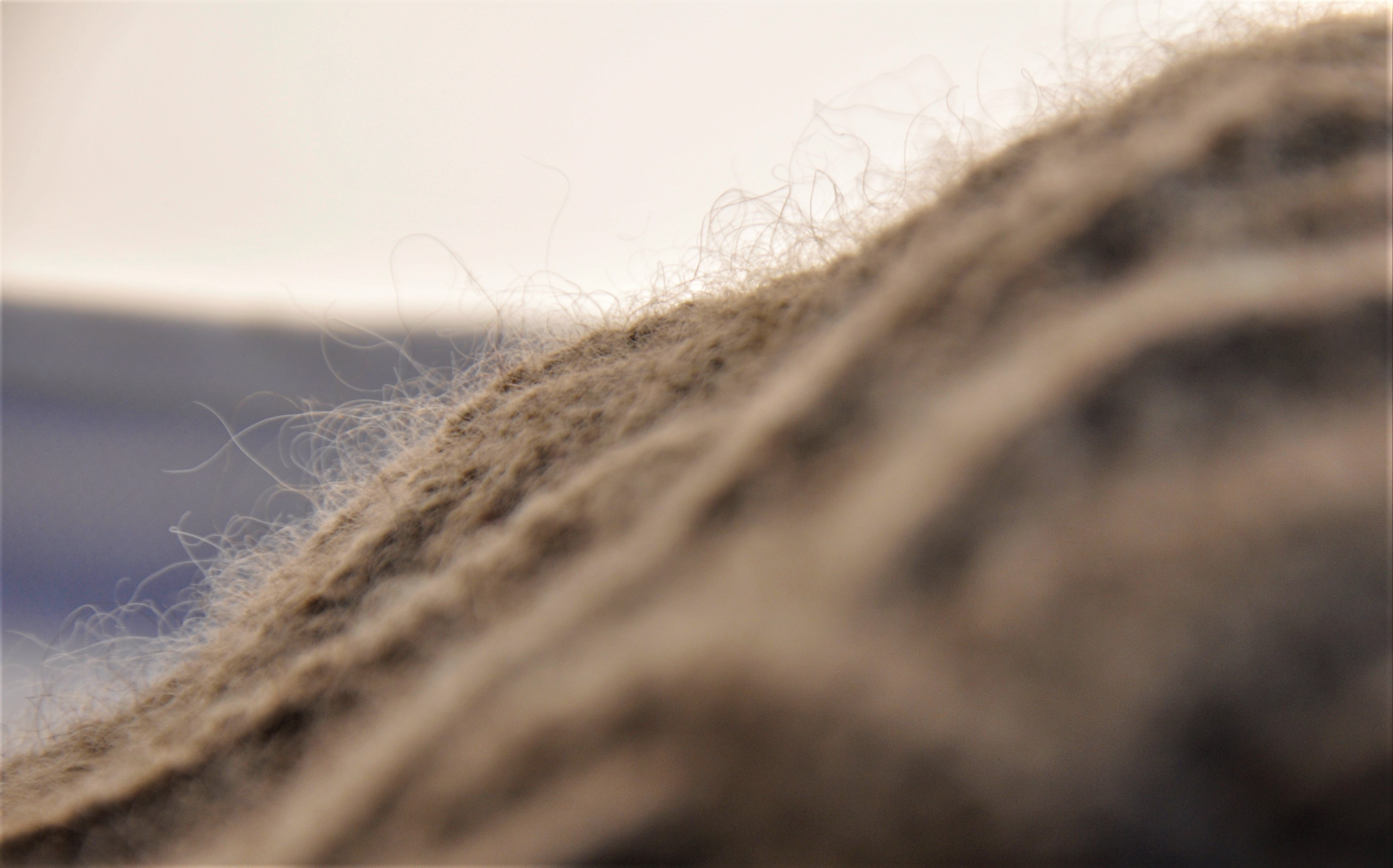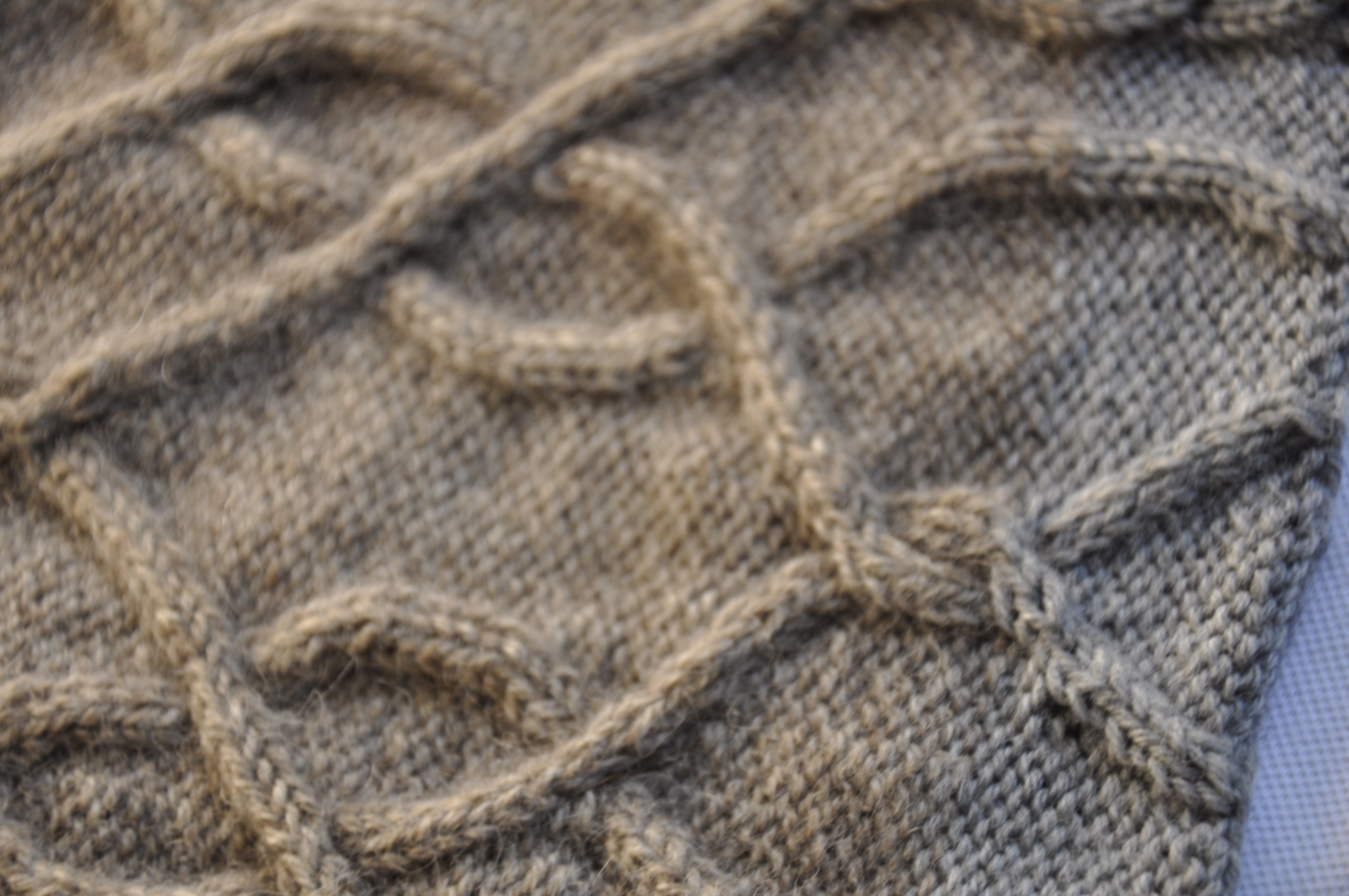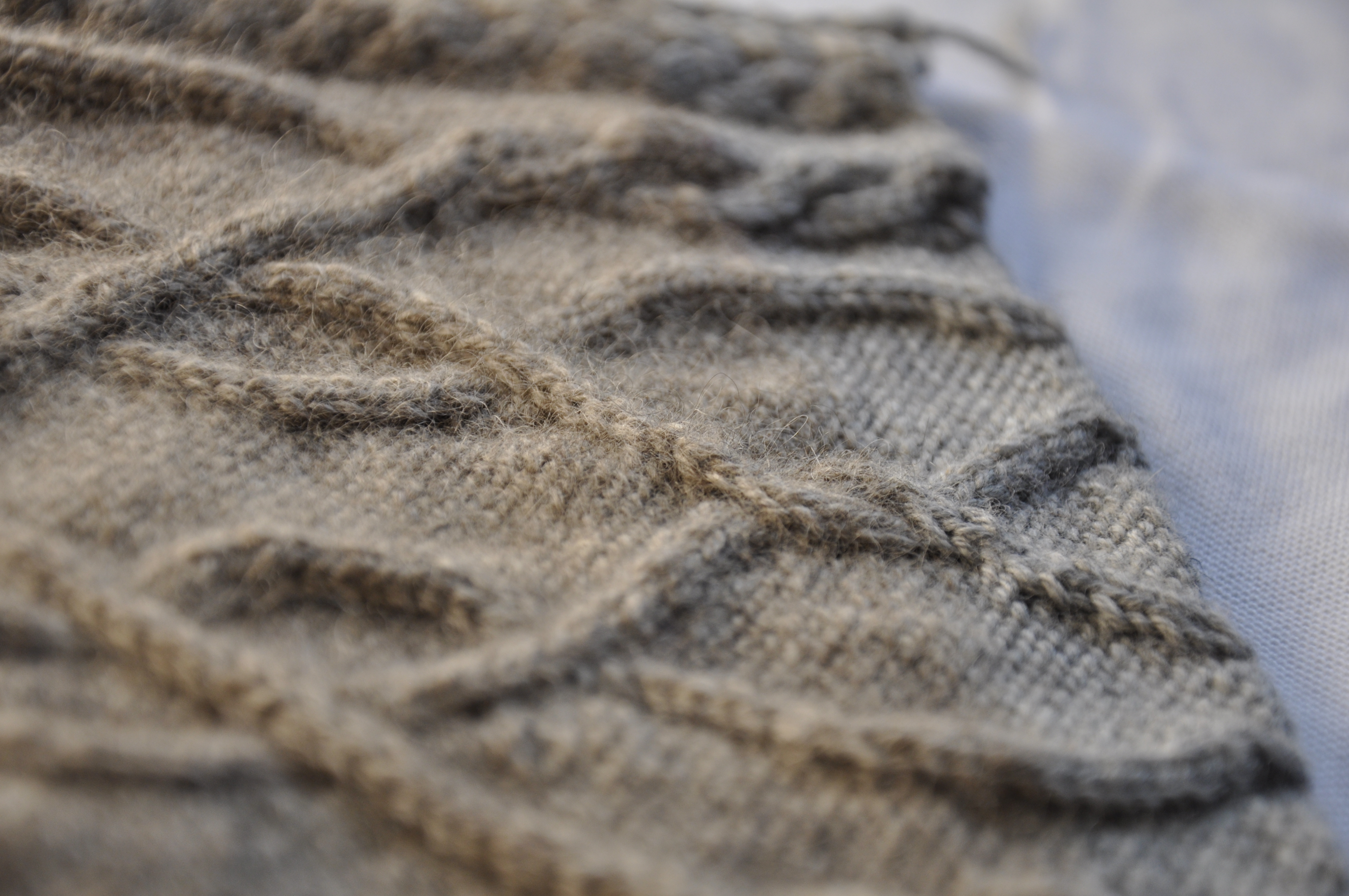...When you have yak. Yak fiber is very little known in Europe, which we hope to slowly change. Yak down is a superior natural material in terms of wearability and thermal insulation. If we are to give some excuse for creation of this yarn brand, yak is one of them. Our founder has tried it in knit and wear and was absolutely convinced that such a material would be in demand on our continent.
Yak is a hairy bovine living at high altitudes in the Himalaya and the Central Asia. They are cousins of bison and of musk oxen who also produce in winter very fine downy undercoat as they have to survive in tougher climates. Here is a small brief on the yak consumer quantities which come from our personal observations.
Warmth
Yak down is definitely warmer than the merino. We can personally attest to that. Yak is much warmer than merino hands down, even warmer than cashmere. We cannot say exactly by how much warmer the yak is, independent studies claim that those values range between 20-60% in favor of yak. Naturally hollow fiber is better at heat retention, and myristic acid - a type of hydrophobic fatty acid contributes at keeping the fiber dry. Yak seriously outperforms merino wool in keeping you sweat-free. By weight, you’re getting more heat out of lighter garments made of yak: that’s science not witchcraft.
Breathability
Some independent studies show that yak is better at regulating heat than merino, by about 60%. Breathability is a factor of material which depends on its ability to absorb moisture relative to its weight and then release it into the air. The most obvious practical application of this is to be found in drying time for larger washed pieces, which is about 24 hours for an exquisitely cabled yak sweater as opposed to 60 hours for a similar cabled merino one. We were also able to enjoy this nice feature during our mountain outings. When a person gets sweaty in some kind of a hiking effort for instance, a merino pull does get moist. Yak yarn stays dry.
Softness and wearability
Cashmere is known as the epitome of softness in the knitting community. Fiber diameters of our cashmere are similar to those of our yak: from 14 to 16 microns for cashmere, from 15 to 18 microns for yak. To a knitter’s touch, yak is a bit more brutal than cashmere to knit. You feel the substance and power in this yarn. When you complete your piece and wash it, both cashmere and yak produce fine down, or “bloom”. The difference between the two is that yak produces much more of it with each subsequent washing and acquires a kind of incomparable softness as if you wear a bunch of kittens. Another major difference between the two is the kind of down they produce: cashmere “bloom” is less springy, but the bloom of yak down holds its vigor when worn. It also does not pill. We hope you will see this with your own yak garment, for now we’ll just post some photos of that bloom which you unfortunately cannot touch yet.
The down obtained from yak is by definition “baby down” as adult animals are not combed. Adult yaks are semi-wild and will not appreciate any hint of trimming done on them by the herders.

Impact on environment
Hoards of cashmere goats and merino sheep reach huge size resulting in overgrazing of grasslands. Our four-legged yak friends graze differently (using fork and knife): while the goats bite off the grasses close to their roots, pulling them out, yaks leave quite a bit of stem, letting a plant survive. They also graze on a wider spectrum of plants than do cashmere goats and merino. Yak’s staple often are shrubby plants and leaves of sedges. When the ground is covered with snow, as it typically is for long periods, yak will paw through quite thick snow layers, using both head and face to help them to gain access to the wilted vegetation underneath. Yak herds have never become an environmental issue one talks about.
In yarn processing, dying consumes the most of water and electricity. Yak fiber is almost never dyed as it does not take on the color well. Is it a bug or a feature? It depends on how you look at it. From the point of view of production costs, it is definitely a nice feature to have. It helps us keep our prices low and stable despite growing energy costs. From a fashionista’s point of view, it is more of a bug. Yak comes in 3 natural colors only: dark brown, beige, and grey. We find that yak makes a fashion statement all of its own being an understated luxury for those in the know.
If we are to advise on the usage of this fiber for knitters, the first thing we note is that most other brands offer yak yarn a bit too thick to our liking resulting in pieces to be worn only in very cold weather. We offer two options, a thicker one for better insulation (140 m for 50 g), and thinner yarn (200 m for 50 g) for truly versatile pieces providing bigger total lengths and requiring less yarn balls.
For us yak is a truly universal fiber, to be used in luxury pieces as well as for heavy wear and tear. In that, yak is quite unique. It also drapes well and holds cables. However, yak holds elastic stitches less well than medium-grade merino. When knitting elastic stitch, it is best to use smaller needles (by 0,5mm size at least). Please take a look at our photos of knitted samples. We knitted a sample with cables and finished it off with superfine merino. This sample was mashed and squashed in one lady's handbag for one month: now, notice the haze of bloom on the yak, and the absence of such on the merino!






